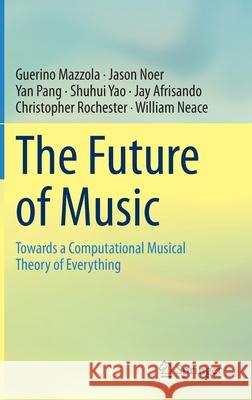The Future of Music: Towards a Computational Musical Theory of Everything » książka
topmenu
The Future of Music: Towards a Computational Musical Theory of Everything
ISBN-13: 9783030397081 / Angielski / Twarda / 2020 / 242 str.
The Future of Music: Towards a Computational Musical Theory of Everything
ISBN-13: 9783030397081 / Angielski / Twarda / 2020 / 242 str.
cena 443,82
(netto: 422,69 VAT: 5%)
Najniższa cena z 30 dni: 424,07
(netto: 422,69 VAT: 5%)
Najniższa cena z 30 dni: 424,07
Termin realizacji zamówienia:
ok. 22 dni roboczych.
ok. 22 dni roboczych.
Darmowa dostawa!
Kategorie:
Kategorie BISAC:
Wydawca:
Springer
Język:
Angielski
ISBN-13:
9783030397081
Rok wydania:
2020
Wydanie:
2020
Ilość stron:
242
Waga:
0.54 kg
Wymiary:
23.39 x 15.6 x 1.6
Oprawa:
Twarda
Wolumenów:
01
Dodatkowe informacje:
Wydanie ilustrowane











